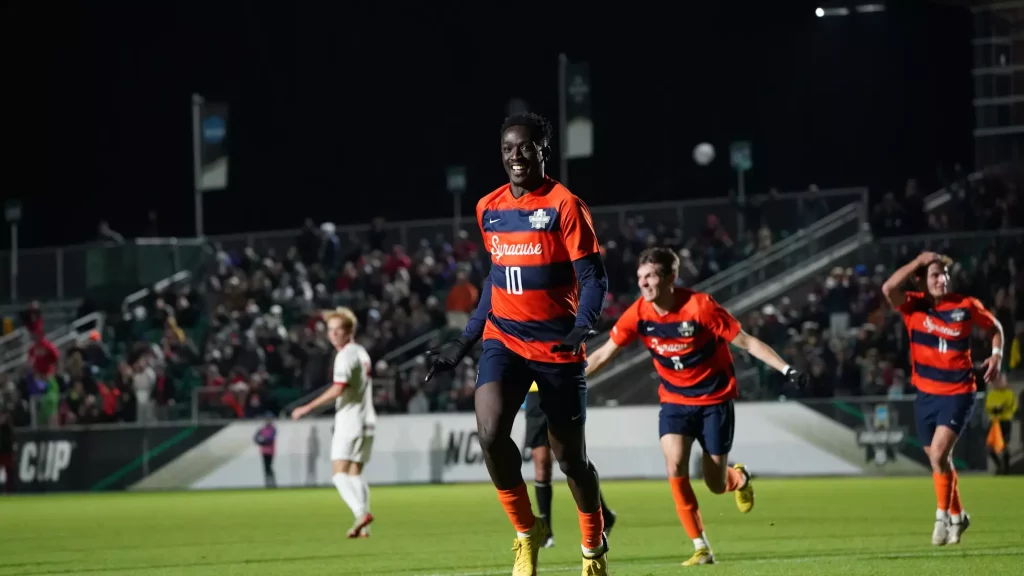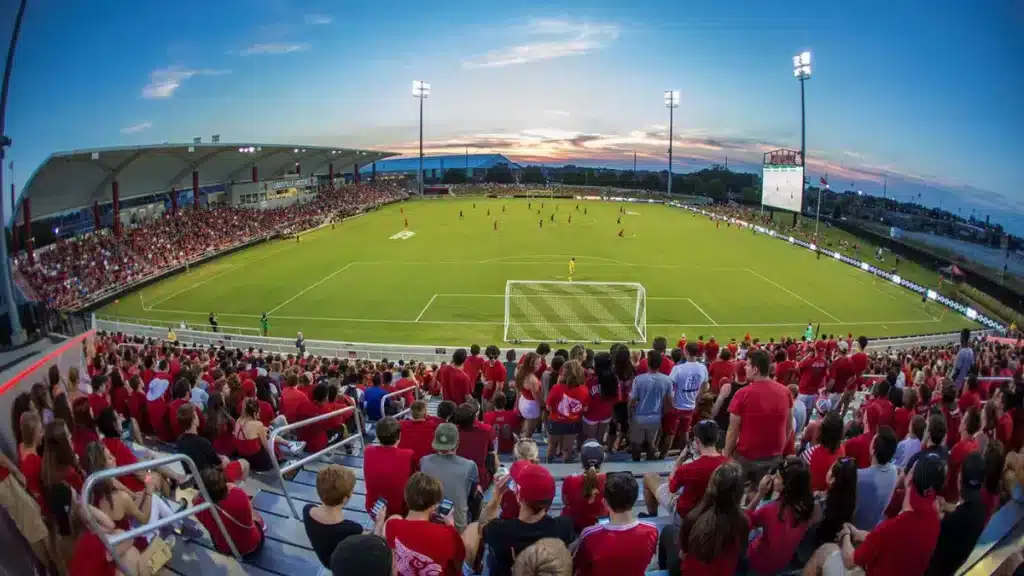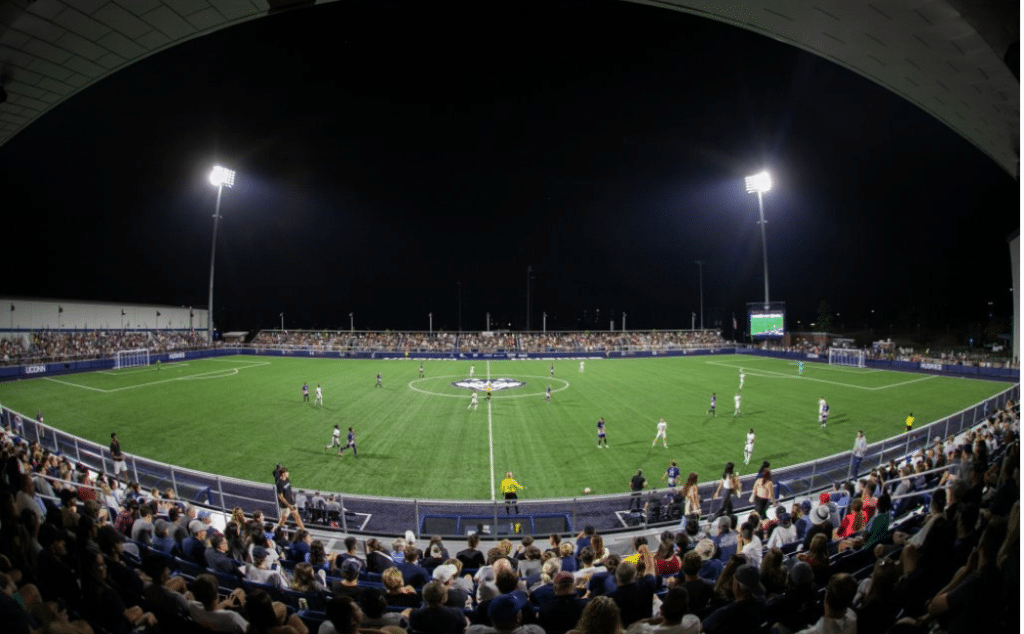Football, or soccer as it’s known in the US, is a worldwide sport that connects people from all corners of the globe. But when we talk about soccer in the US, we open the door to a unique world of sport and education that is very different from European soccer.
While the sport in Europe often revolves around clubs and national leagues with promotion and relegation, the US has its own way of playing this beloved sport: through college football.
A fixed divisional structure
The most notable difference between European football and American college football is the divisional structure. While European clubs can rise or fall in leagues based on their performance, college soccer teams in the US stay in the same division no matter how the season goes.
NCAA Division 1: The highest level
NCAA Division 1 is the highest level of college football and includes some of the largest, most well-known and competitive universities in the country.
Think of teams like Alabama, Ohio State and Clemson. Known for attracting the best high school players and the most promising international players, this level is known for its intense competition.
There is a lot of attention from the professional leagues in the US and many of the best Division 1 players go on to professional soccer careers after college. Either in American leagues like MLS or NWSL or in Europe.

Nathan Opuku who in January 2023 switched Syracuse University in NCAA Division 1 with championship club Leicester City.
NCAA Division 2: Great competition and high level
NCAA Division 2 also offers a high level of football and is home to several renowned universities such as Bentley University, Florida Southern College and
Cal Poly Pomona
. The best teams in Division 2 can often compete on par with or even surpass the average team in Division 1.
The key sporting difference between Division 1 and 2 is usually the athlete’s physical performance. In Division 1 – and in the US in general – there is a strong emphasis on physicality and athletic skills. Often it is these athletic attributes that determine whether an athlete ends up in Division 1 or Division 2.
NCAA Division 3: The well-rounded experience
NCAA Division 3 presents a more balanced experience, with the academic component carrying more weight than the athletic. Student athletes need to be able to manage their time effectively, as the sports component is not as prioritized as in Division 1 and 2.
In Division 3, colleges don’t usually offer athletic scholarships, meaning students often have to cover the costs themselves. This can make training more expensive for the individual.
We have not placed players in Division 3 so far.
NAIA: Private universities at a high level
The NAIA also offers a high level of football and is home to several renowned universities such as Keiser University, University of Northwestern Ohio and Lindsey Wilson College.
However, in the NAIA, the sporting disparity between top and bottom is more variable than in both NCAA Division 1 and 2.
However, the main difference between NAIA and NCAA universities lies in the size of the institutions and whether they are public or private. The NAIA is primarily home to private universities and also has more lenient academic requirements than the NCAA.
That said, in the NAIA you can play at a high level, get a quality education and receive scholarships just like you can in the NCAA.
NJCAA: The alternative route to the best universities
NJCAA organizes and facilitates sports at
junior colleges
in the United States. A Junior College program lasts 2 years and if a student shows outstanding performance both athletically and academically, they can transfer to a 4-year university in the NCAA or NAIA to complete their bachelor’s degree. This route is ideal for those who did not initially meet the admission requirements of a 4-year college or university.
Junior colleges are affordable and offer generous academic and athletic scholarships, while colleges and universities keep a close eye on the talented student athletes in the NJCAA.
Many of our clients have started with NJCAA scholarships and their performance has led to offers from NCAA Division 1 colleges.

Oliver Hald who started in the NJCAA at Muskegon College and now plays in NCAA Division 1 for Southern Methodist University .
Game structure
The college football season includes both conference and championship games.
The most competitive teams compete in national championship games, while others focus on winning their conference.
What is a conference?
In college football, a “conference” refers to a group of colleges and universities that compete in football and other sports against each other. These conferences are typically regional and consist of member institutions located in the same geographic area of the US.
Some of the major college football conferences in the US include the Southeastern Conference (SEC), Big Ten Conference, Pacific-12 Conference (Pac-12), Atlantic Coast Conference (ACC) and Big 12 Conference. Each conference has its own unique history, traditions and rivalries.
The recruitment system
In the US, the college football recruiting system is a complex and highly regulated system that connects talented young players with university programs. Here are some key aspects of this system:
Performance in high school
The recruitment process often begins for players in their high school/secondary school years.
Scouts and college coaches monitor high school games, club games and tournaments to identify promising talent and potential student athletes, across national borders.
Scholarships and offers
Coaches can offer scholarships to promising players. These scholarships can include partial or full coverage of tuition and other costs. Scholarships are primarily based on the player’s performance on the field and in the classroom.
In the US, this is a huge deal, as in many cases a scholarship will be the main reason why an individual student can afford to go to university.
The battle for talent
Since there is a limited amount of scholarships available, college teams compete for the best talent. Competition between universities is intense and each year is a race against time to fill your team with talented players.
This competition exists not only nationally, but certainly internationally as well.
Through recruitment agencies like us at NSSA, universities can also strengthen their teams with international players from around the world.
More and more international players are being recruited to college football in the US and this has led to increased competition. Both in recruitment as well as in the game on the field, which is constantly evolving.

Previously FC. North Zealand U19 player, Jonas Lyshøj in action for Monmouth College.
Rules and regulations
One of the myths often discussed in relation to American football (soccer) versus European football is the difference in rules. There is a common perception that the rules are significantly different. However, this is no longer the case, although historically there have been some differences.
The best example is the former rule of the so-called “American penalty kick,” where the player had a limited amount of time to take the penalty kick on the run.
These rules have been changed and college soccer in the US follows the regular FIFA rules for the game of soccer.
Football culture and fans
In the US, sport is more than just sport; it’s part of the culture. Athletes and players represent their universities, and locals feel a strong connection to their school.
Fellow students across the many sports support the university teams fiercely and loyally. Whether it’s a basketball game or a football match, these are often school-wide events.
Football (soccer) has not yet reached the popularity level of American football games, where 100,000 spectators are not uncommon.
However, UCSB holds the the attendance record of 15,896 spectators for the rivalry game between UCSB and Cal Poly Pomona.

What is the best option for me?
Although most start out with the idea that NCAA Division I is the ultimate goal, it ultimately comes down to what experience suits the individual and a clear answer to the question can rarely be given.
The most important thing is to find a college that suits you. If you do well, it is always possible to request a transfer to a higher level. This will always be an option if you have proven yourself during your stay and often larger scholarships are given to international students who have proven themselves at college in the US, as opposed to if they had played at club level in Europe.
The good news is that with 3 NCAA divisions, NAIA and NJCAA are options for any potential Student Athlete.














